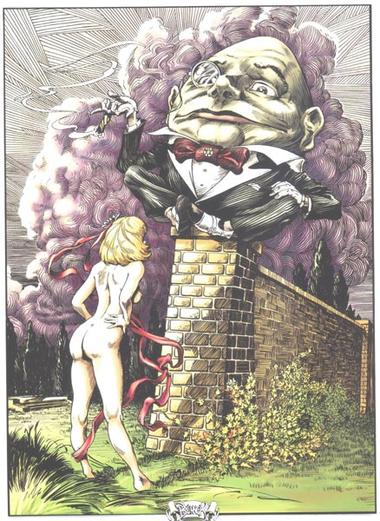
päätin jättää sokerin syomatta ja kiipesin sitruunapuuhun. voikohna sitruuna jotenkin korvata.
Makea on yksi viidestä
perusmausta.
"Sokeri kaikissa muodoissa voi olla yhtä paljon riippuvuutta aiheuttavaa kuin kokaiini ja heroiini"Makea ärsyke saa aikaan mielihyvän tunnetta ihmisissä ja eläimissä. Aistimus saa alkunsa makean aineen kiinnittyessä
makureseptorin G-proteiiniin yhdistyneeseen osaan, joka laukaisee alayksiköiden tuoton.
[1] Alayksiköt aktivoivat edelleen uusia kemiallisia reaktioita, kuten
toisiolähettejä tuottavia
entsyymejä.
"Sokeri vaikuttaa haitallisesti aivojen välittäjäaineisiin" Luonnolliset makeat aineet aktivoivat kemiallisen polun, joka sisältää
syklisestä adenosiinimonofosfaatista (cAMP) riippuvaisen K
+-kanavan rajoittamisen. Sweetness perception may differ between species significantly. For example, even amongst the
primates sweetness is quite variable.
New World monkeys do not find aspartame sweet, while
Old World monkeys,
apes and humans all do.
[20] Felidae like
cats cannot perceive sweetness at all The multipoint attachment (MPA) theory assumes the presence, in the human sweetness receptor (probably a seven-pass transmembrane receptor), of at least eight fundamental recognition sites, namely, the B-, AH-, XH-, G1-, G2-, G3-, G4- and D-recognition.. series of chemical reactions is central to nearly all
metabolic reactions, and is the source of two-thirds of the food-derived
energy in higher
organisms.
Hans Adolf Krebs received the 1953
Nobel Prize in Physiology or Medicine for The series of reactions known by various names, including the
citric acid cycle
The interplay among receptor specificity, diet selection, and
food intake can be seen in the confluence of receptor specificity
for sweet compounds and the preference shown for sweet stimuli.
Several comparative studies on taste receptor specificity and
receptor structure have shed light on the sometimes very subtle
changes in amino acid sequence that can dramatically affect
stimulus intake.

Published: October 5, 2009
In addition to assorted bad breaks and pleasant surprises, opportunities and insults, life serves up the occasional pink unicorn. The three-dollar bill; the nun with a beard; the sentence, to borrow from the Lewis Carroll poem, that gyres and gimbles in the wabe.
An experience, in short, that violates all logic and expectation. The philosopher Soren Kierkegaard wrote that such anomalies produced a profound “sensation of the absurd,” and he wasn’t the only one who took them seriously. Freud, in an essay called “The Uncanny,” traced the sensation to a fear of death, of castration or of “something that ought to have remained hidden but has come to light.”
At best, the feeling is disorienting. At worst, it’s creepy.
Now a study suggests that, paradoxically, this same sensation may prime the brain to sense patterns it would otherwise miss — in mathematical equations, in language, in the world at large.
“We’re so motivated to get rid of that feeling that we look for meaning and coherence elsewhere,” said Travis Proulx, a postdoctoral researcher at the University of California, Santa Barbara, and lead author of the paper appearing in the journal Psychological Science. “We channel the feeling into some other project, and it appears to improve some kinds of learning.”
Researchers have long known that people cling to their personal biases more tightly when feeling threatened. After thinking about their own inevitable death, they become more patriotic, more religious and less tolerant of outsiders, studies find. When insulted, they profess more loyalty to friends — and when told they’ve done poorly on a trivia test, they even identify more strongly with their school’s winning teams.
In a series of new papers, Dr. Proulx and Steven J. Heine, a professor of psychology at the University of British Columbia, argue that these findings are variations on the same process: maintaining meaning, or coherence. The brain evolved to predict, and it does so by identifying patterns.
When those patterns break down — as when a hiker stumbles across an easy chair sitting deep in the woods, as if dropped from the sky — the brain gropes for something, anything that makes sense. It may retreat to a familiar ritual, like checking equipment. But it may also turn its attention outward, the researchers argue, and notice, say, a pattern in animal tracks that was previously hidden. The urge to find a coherent pattern makes it more likely that the brain will find one.
“There’s more research to be done on the theory,” said Michael Inzlicht, an assistant professor of psychology at the University of Toronto, because it may be that nervousness, not a search for meaning, leads to heightened vigilance. But he added that the new theory was “plausible, and it certainly affirms my own meaning system; I think they’re onto something.”
In the most recent paper, published last month, Dr. Proulx and Dr. Heine described having 20 college students read an absurd short story based on “The Country Doctor,” by Franz Kafka. The doctor of the title has to make a house call on a boy with a terrible toothache. He makes the journey and finds that the boy has no teeth at all. The horses who have pulled his carriage begin to act up; the boy’s family becomes annoyed; then the doctor discovers the boy has teeth after all. And so on. The story is urgent, vivid and nonsensical — Kafkaesque.
After the story, the students studied a series of 45 strings of 6 to 9 letters, like “X, M, X, R, T, V.” They later took a test on the letter strings, choosing those they thought they had seen before from a list of 60 such strings. In fact the letters were related, in a very subtle way, with some more likely to appear before or after others.
The test is a standard measure of what researchers call implicit learning: knowledge gained without awareness. The students had no idea what patterns their brain was sensing or how well they were performing.
But perform they did. They chose about 30 percent more of the letter strings, and were almost twice as accurate in their choices, than a comparison group of 20 students who had read a different short story, a coherent one.
“The fact that the group who read the absurd story identified more letter strings suggests that they were more motivated to look for patterns than the others,” Dr. Heine said. “And the fact that they were more accurate means, we think, that they’re forming new patterns they wouldn’t be able to form otherwise.”
Brain-imaging studies of people evaluating anomalies, or working out unsettling dilemmas, show that activity in an area called the anterior cingulate cortex spikes significantly. The more activation is recorded, the greater the motivation or ability to seek and correct errors in the real world, a recent study suggests. “The idea that we may be able to increase that motivation,” said Dr. Inzlicht, a co-author, “is very much worth investigating.”
Researchers familiar with the new work say it would be premature to incorporate film shorts by David Lynch, say, or compositions by John Cage into school curriculums. For one thing, no one knows whether exposure to the absurd can help people with explicit learning, like memorizing French. For another, studies have found that people in the grip of the uncanny tend to see patterns where none exist — becoming more prone to conspiracy theories, for example. The urge for order satisfies itself, it seems, regardless of the quality of the evidence.
Still, the new research supports what many experimental artists, habitual travelers and other novel seekers have always insisted: at least some of the time, disorientation begets creative thinking.
 Physicists, because of their great intellectual honesty, were forced, kicking and screaming, across the divide. They really had no choice.
Physicists, because of their great intellectual honesty, were forced, kicking and screaming, across the divide. They really had no choice.  Transformation is all around us, and leading chip maker knows this very well. I employ you to take a minute to analyze with allegorical eyes all of this is truly about alchemy. First we begin with our prima materia which is clearly stated by with the word "Transform" next to DNA. It is you the viewer that will be transformed by the end , what you are seeing is actually symbolically technological alchemy. (TransAlchemy)
Transformation is all around us, and leading chip maker knows this very well. I employ you to take a minute to analyze with allegorical eyes all of this is truly about alchemy. First we begin with our prima materia which is clearly stated by with the word "Transform" next to DNA. It is you the viewer that will be transformed by the end , what you are seeing is actually symbolically technological alchemy. (TransAlchemy)




 no sexual harrashment, no violance..relax /Up There. No sickness no death, ceep cool. What passes between light,sound and the heart is in focus here.
no sexual harrashment, no violance..relax /Up There. No sickness no death, ceep cool. What passes between light,sound and the heart is in focus here.


 Metzinger has teamed up with Blanke and his colleagues in an experiment that induces an out-of-body experience in healthy volunteers. They film each volunteer from behind and project the image into a head-mounted display worn by the volunteer so that they see an image of themselves standing about 2 metres in front. The experimenters then stroke the volunteer's back - which the volunteers see being done to their virtual self. This creates sensory conflict, and many reported feeling their sense of self migrating out of their physical bodies and towards the virtual one (
Metzinger has teamed up with Blanke and his colleagues in an experiment that induces an out-of-body experience in healthy volunteers. They film each volunteer from behind and project the image into a head-mounted display worn by the volunteer so that they see an image of themselves standing about 2 metres in front. The experimenters then stroke the volunteer's back - which the volunteers see being done to their virtual self. This creates sensory conflict, and many reported feeling their sense of self migrating out of their physical bodies and towards the virtual one (

 The Type IIs generally lump together various “transitional” ecosystems..copenhagen were Here
The Type IIs generally lump together various “transitional” ecosystems..copenhagen were Here

 @mactonnies:There couldn't be a society of people who didn't dream. They'd be dead in two days 7:03 PM Oct 16th. Died Oct 18th in his dream Orbital space cannot be effectively managed by any one acting alone. The inherently international character of orbital space has been recognized by a majority of nations in the Outer Space Treaty. The international community should seek to design and implement a space regime to ensure that space remains a peaceful environment for the benefit of all.
@mactonnies:There couldn't be a society of people who didn't dream. They'd be dead in two days 7:03 PM Oct 16th. Died Oct 18th in his dream Orbital space cannot be effectively managed by any one acting alone. The inherently international character of orbital space has been recognized by a majority of nations in the Outer Space Treaty. The international community should seek to design and implement a space regime to ensure that space remains a peaceful environment for the benefit of all.

 Des diplomates palestiniens et des représentants d'Etats arabes comptent utiliser le débat du Conseil de sécurité de l'ONU qui aura lieu mercredi à New York pour entreprendre des actions suite aux conclusions du rapport Goldstone.
Des diplomates palestiniens et des représentants d'Etats arabes comptent utiliser le débat du Conseil de sécurité de l'ONU qui aura lieu mercredi à New York pour entreprendre des actions suite aux conclusions du rapport Goldstone. 












